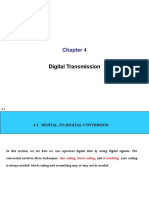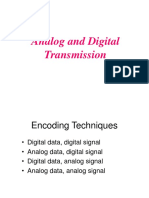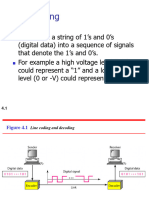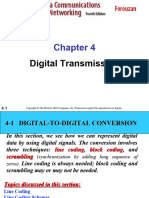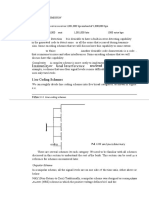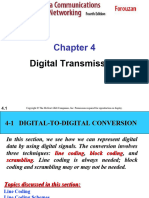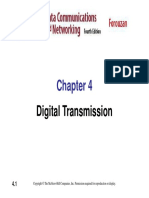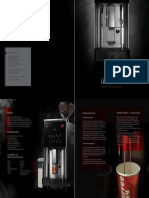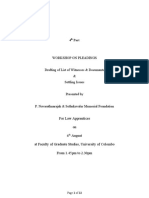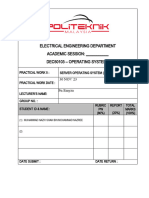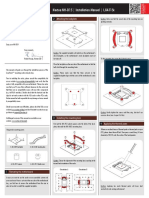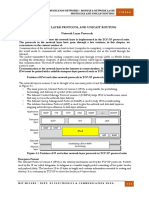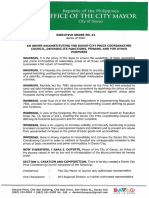0% found this document useful (0 votes)
26 views32 pagesWeek 3
This document discusses digital-to-digital conversion techniques for digital data transmission, including line coding, block coding, and scrambling. Line coding is used to represent digital data with digital signals and is always needed, while block coding and scrambling may or may not be needed. Various line coding schemes such as NRZ, RZ, and multilevel schemes are described and compared. Block coding maps groups of data bits to code words for transmission and scrambling substitutes bit patterns to prevent loss of synchronization. Examples of block coding and scrambling techniques like 4B/5B, 8B/10B, B8ZS, and HDB3 are provided.
Uploaded by
Syed Ali AkbarCopyright
© © All Rights Reserved
We take content rights seriously. If you suspect this is your content, claim it here.
Available Formats
Download as PDF, TXT or read online on Scribd
0% found this document useful (0 votes)
26 views32 pagesWeek 3
This document discusses digital-to-digital conversion techniques for digital data transmission, including line coding, block coding, and scrambling. Line coding is used to represent digital data with digital signals and is always needed, while block coding and scrambling may or may not be needed. Various line coding schemes such as NRZ, RZ, and multilevel schemes are described and compared. Block coding maps groups of data bits to code words for transmission and scrambling substitutes bit patterns to prevent loss of synchronization. Examples of block coding and scrambling techniques like 4B/5B, 8B/10B, B8ZS, and HDB3 are provided.
Uploaded by
Syed Ali AkbarCopyright
© © All Rights Reserved
We take content rights seriously. If you suspect this is your content, claim it here.
Available Formats
Download as PDF, TXT or read online on Scribd
/ 32


















